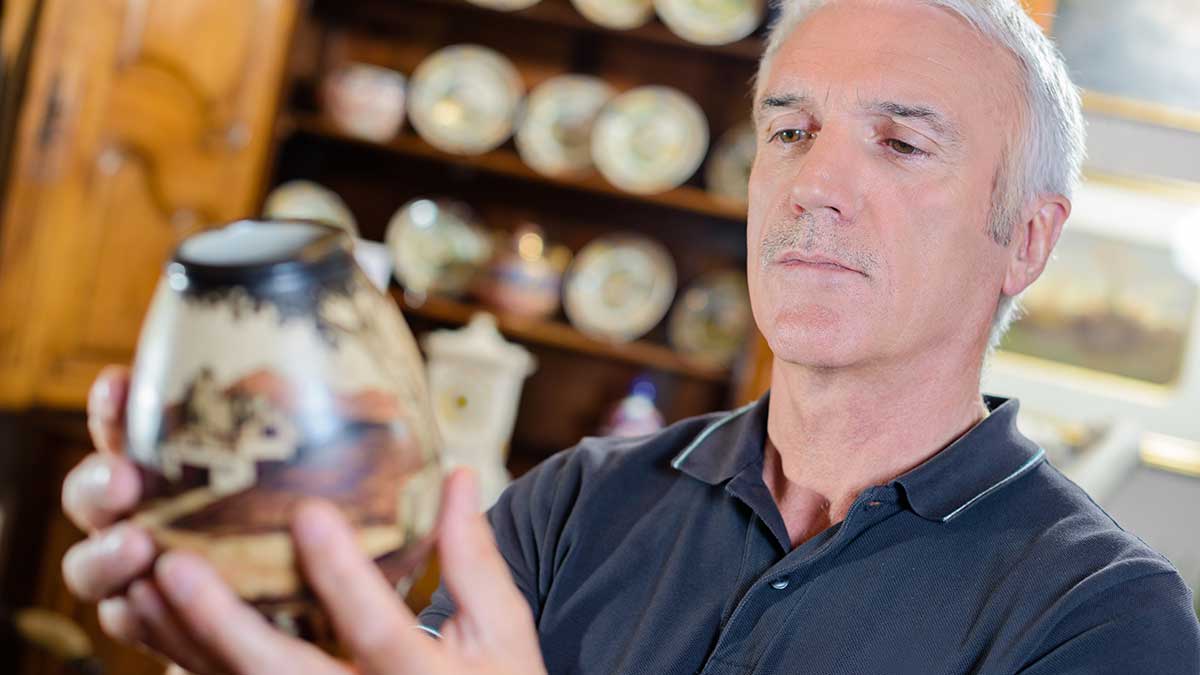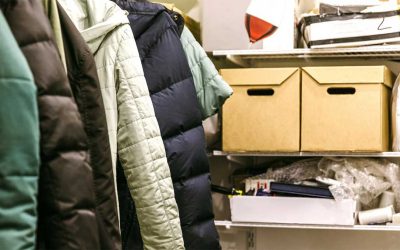Is your old china, silver, and furniture gathering dust in your attic – ready to sell for a fortune when you downsize? Or are you saving these belongings for your children or grandchildren? You might want to think again.
The younger generation is resistant to inheriting stuff. They are the “Ikea and Target” generation who generally opt into buying inexpensive, modern furniture over inherited antiques and generally value experiences over objects. So, you might not have luck simply giving your belongings away.
Additionally, profiting off of your older belongings can be challenging. Our advice is to start the process early and temper your expectations. Although we will discuss general guidelines, for more specific advice we recommend contacting a liquidator, estate agent, or antiques expert. All situations are different!
General Advice
Start by understanding that you will need to separate the emotional value of a piece and the original retail value of a piece from the current value. Items are worth what people are willing to pay for them, so focusing on what you paid originally or what you believe the item should be worth will lead to more frustration. In general, consider the following aspects for your pieces:
Condition
Evaluate the condition of your items honestly. Cracks or chips on china, tears in rugs, and damage to furniture can all decrease the value of the item.
Quality
Condition is the item’s current state. Quality refers to how well an item was originally made. If an item was originally of a higher quality, it is likely to retain more value.
Rarity
Generally, the rarer an item is, the more value it has. Rarity can be impacted by the number of items originally produced, by the number of items still around, or by the specific edition (such as a rare color or model) of item that you have.
Age
Although older items may be rarer (and therefore more valuable), selling older items puts you at the mercy of the market. Antiques, which are usually over 100 years old, may be valuable. However, current trends suggest that older items are not in high demand.
Restoration
Restorations can decrease the value of an item. Some restorations that provide basic repair to ensure operations are acceptable, but should be done by a trained professional to maintain value.
Buyers
Consider who you are trying to sell to, as different buyers are willing to pay different prices. Dealers are looking for a third party to buy, so costs may vary. Collectors will usually pay a price that matches the value, but can be more difficult to find. Online buyers are usually looking for bargain deals, so will be willing to pay less.
It helps to think about your items by category as well. Be sure to leave your emotions at the door; sentimental value that you attribute to certain items will not make them more valuable in the marketplace.
Furniture & Rugs
There is a wide margin of value in furniture. Be sure to research your models specifically to identify worth. Often, the names of makers can be found in the top left drawer of dressers or underneath chairs. Some of the makers with highest value are Baker, Kittinger, Henkel Harris, Widdicomb, Kindle, Century and Henredon. Having furniture by these makers does not necessarily mean they will yield high value, however. If there is no maker labeled on your older furniture, it may fall into the “brown furniture” category (antique or vintage pieces with traditional silhouettes) which have been out of style and have not retained much retail value.
Additionally, people often assume rugs are going to fetch large sums of money, since they are so expensive to buy. However, rugs are far more valuable when new. They often do not resale for more than 10% of the purchase price.
Silver & Coins
Maybe your family has not accumulated much old furniture, but you do have a wide selection of silver sets or coins. For silver sets, check underneath for the label “sterling”. If this label is missing, the piece is silver plate and is less valuable. As you would with furniture, be sure to check for a maker. The best sterling makers are Tiffany, Georg Jensen, Puiforcat and Buccellati. If your silver is European, it may have a stamp on the bottom that shows the amount of silver used in the item. Unfortunately, however, most sterling silver sets have become uncollectible and most silver pieces are now melted down.
Coins can be a decent source of silver. Check the date for 1964, which is the cutoff for use of silver in coins. If your parent was a committed and detailed collector, the coin may be worth more. For specific coin worth, check out the Professional Coin Grading Service or the Numismatic Guaranty Corporation.
Unfortunately, unless your silver or coin is particularly rare or valuable, the items are probably not worth as much as you would hope.
Art
Art’s value is in the eye of the beholder. Most art is purely decoration and the worth is decided by the purchaser. Art that contains a signature may hold more value depending on the artist. You can use Artprice.com or Findartinfo.com to find out art prices or conduct art appraisals. However, if there is not a signature or more detailed information about the art, you must assume that the value is contained to whatever someone will choose to pay for the piece.
China
Like furniture and silver, the demand for china (and subsequently the prices people will pay for china) have generally decreased. Check the bottom of the piece for the name, as you can find some valuable pieces made by companies such as Meissen, Sevres, Minton, Wedgwood, Royal Copenhagen, Herend, Crown Derby, Worcester and Doulton. But again – check your expectations at the door. It is unlikely you will get close to the original worth of china sets.
Closing Thoughts
It’s tempting to think that you or your kids will make a lot of money selling some of the older items in your home. In reality, these items may not be as big of a money-maker as one would like. Our advice is to start early, be realistic about what your items are worth, and seek out professionals for more specific cases.




